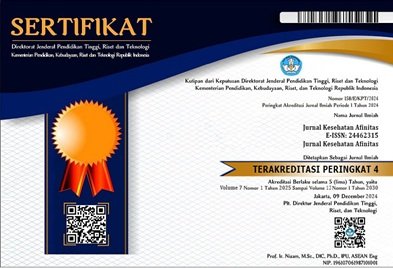THE EFECT OF PASSIVE ROM AND TACTILE STIMULATION ON MUSCLE STRENGTH IN POST ISCHEMIC STROKE PATIENTS IN RSUD DR. H. SLAMET MARTODIRDJO PAMEKASAN REGENCY
Kata Kunci:
ROM, Tactile stimulation, Ischemic strokeAbstrak
Post ischemic stroke patients should immediately be given passive ROM therapy and tactile stimulation, because if passive ROM therapy and tactile stimulation are not given, it will result in atrophy, hemiparesis, and decreased muscle strength. The purpose of this study is to ascertain how tactile stimulation and mobilization affect the post-ischemic stroke patients' ability to move their limbs. In order to determine the various test analyses using spss, this study used a quasi-experimental design with a wo group pretest posttest, research data collection using observation sheets, editing data processing, scoring, coding, tabulating, wilcoxon statistical tests, and mann whitney statistical tests. According to the results of the Wilcoxon test, the asymp.sig (2-tailed) value in group 1 was 1.000 higher than the probability value of 0,05, and the asymp.sig (2-tailed) value in group 2 was 0,018 less than the probability value of 0,05. The study's findings revealed that 7 respondents received good muscle strength scores, while 6 respondents received poor muscle strength scores. There is a difference between the effects of passive range of motion mobilization and tactile stimulation in groups 2 and 1, with group 2 receiving passive ROM intervention and tactile stimulation twice daily for 10 minutes over the course of 20 days, and group 1 receiving passive ROM intervention and tactile stimulation just once daily for 10 minutes. So it is advisable for post ischemic stroke patients to perform passive range of motion of muscles and tactile stimulation in preventing muscle weakness and atrophic events in the extremities.





